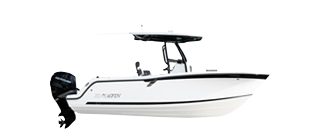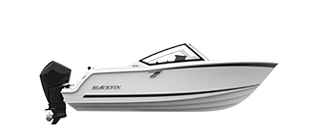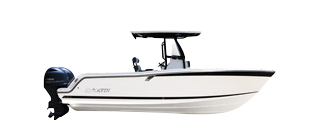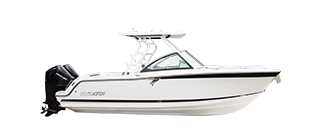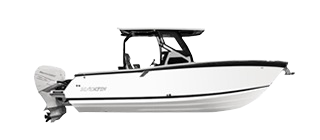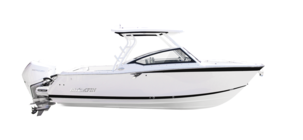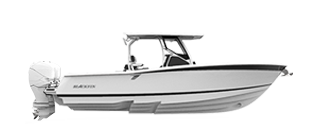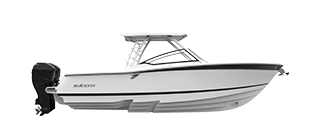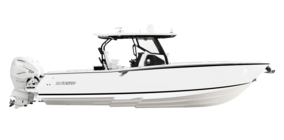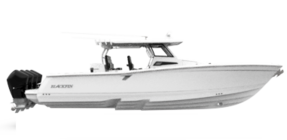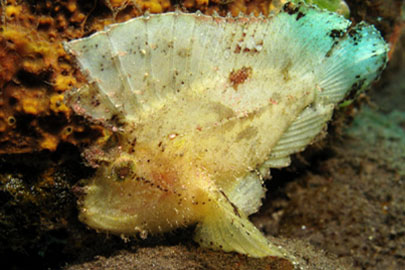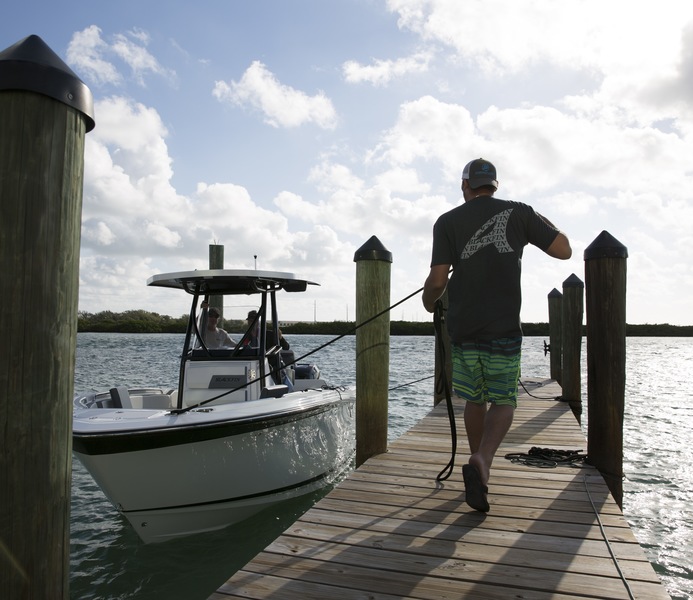
Cleats are a simple piece of hardware, but the right cleats--like those used on every Blackfin--can make or break a fishing trip.
A cleat is a simply two-horned device designed to make tying up or anchoring a boat fast, secure and simple.
Unfortunately, on a fishing boat, cleats can all too often be the source of lost trophy fish as a loop of line wraps around the fixture at just the wrong moment. The line breaks and the fish is gone.
That won't happen on a Blackfin, however, because all the cleats are angler-friendly. Bow and amidships cleats are pop-up models; they sit flush with the deck when not in use, then quickly pull up to functional position when it's time to dock.
Aft, there are hawse pipes with cleats secured to the inwales below--the same solution used on the largest fly-bridge sportfishing yachts. Again, it leaves the gunwales uncluttered, and keeps fishing lines running free.
And Blackfin cleats are not off-the-shelf marine hardware. They're custom designed heavy-gauge rust-proof forged 316 stainless steel from Gemlux, with the Blackfin logo proudly cast into the polished finish. Each is through bolted to a rock-hard 3/4" backing plate that assures the fasteners will never pull out, even under the heaviest loads.
The cleats are all oversized, 8-inch models on the 272 and 332, 6-inch on the 212 and 242, designed to handle the loads created by surge, wind and current. They're rattle-proof, assuring a quiet ride as well as silent anchoring when necessary, and the installations are waterproof, eliminating the need for drains that can clog or grow mildew. Like every component of every Blackfin, they're built to last.
How to Tie a Cleat Hitch
A cleat hitch is a fast, simple and secure way of tying up your Blackfin at the docks. It won't jam under load, so it's quickly released when you're ready to push off. However, it's easy to do it wrong. Here's the quick way to do it right:
- Run the line under the far horn, that is the horn farthest away from the load, around the base, under the near horn and then up over the top of the cleat.
- Come back across under the far horn, back up over the center to form a figure 8 around the cleat.
- Now form an underhand loop with the end of the line under the loop coming back towards you and drop that loop over the near arm of the cleat, which pins the free end under the last wrap.
- That's all it takes to secure an anchor line or to tie up for lunch at a waterside restaurant.
- For overnights or longer, or when the line is under load and has to be secured rapidly, some pro skippers like to take a full turn around the base of the cleat--taking the strain off the line-- before making their figure 8 and securing the hitch with the underhand loop.
- The bitter end, the remaining line left after the hitch, can be made into a neat "Flemish coil" on the dock. That way, it won't tangle feet or gear. Simply make a loop with the excess line and lay coils inside the loop until you come to the end of the line. Then rotate the coil a bit to tighten up the loop and you're done.
Bookmark & Share
User Comments
Be the first to comment on this post below!
Previous Article
Most Popular Articles
- Blackfin Fishing Boats - The Legend Lives On | Blackfin Boats
- The Blackfin 272CC ? Ranked Among The Very Best Fishing Boats of 2018!
- How to Acquire Your Boat Captain?s License in Florida
- Blackfins new 33? debuts at the 2018 Fort Lauderdale International Boat Show!
- Top 5 Tips for Buying Your First Fishing Boat
- What is the Best Time to Buy a Blackfin Fishing Boat?
- 5 Reasons Why Blackfin Boats are Every Angler?s Dream!
- Center Console Boats Guide - Advantages & Benefits


